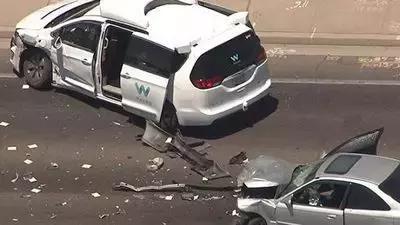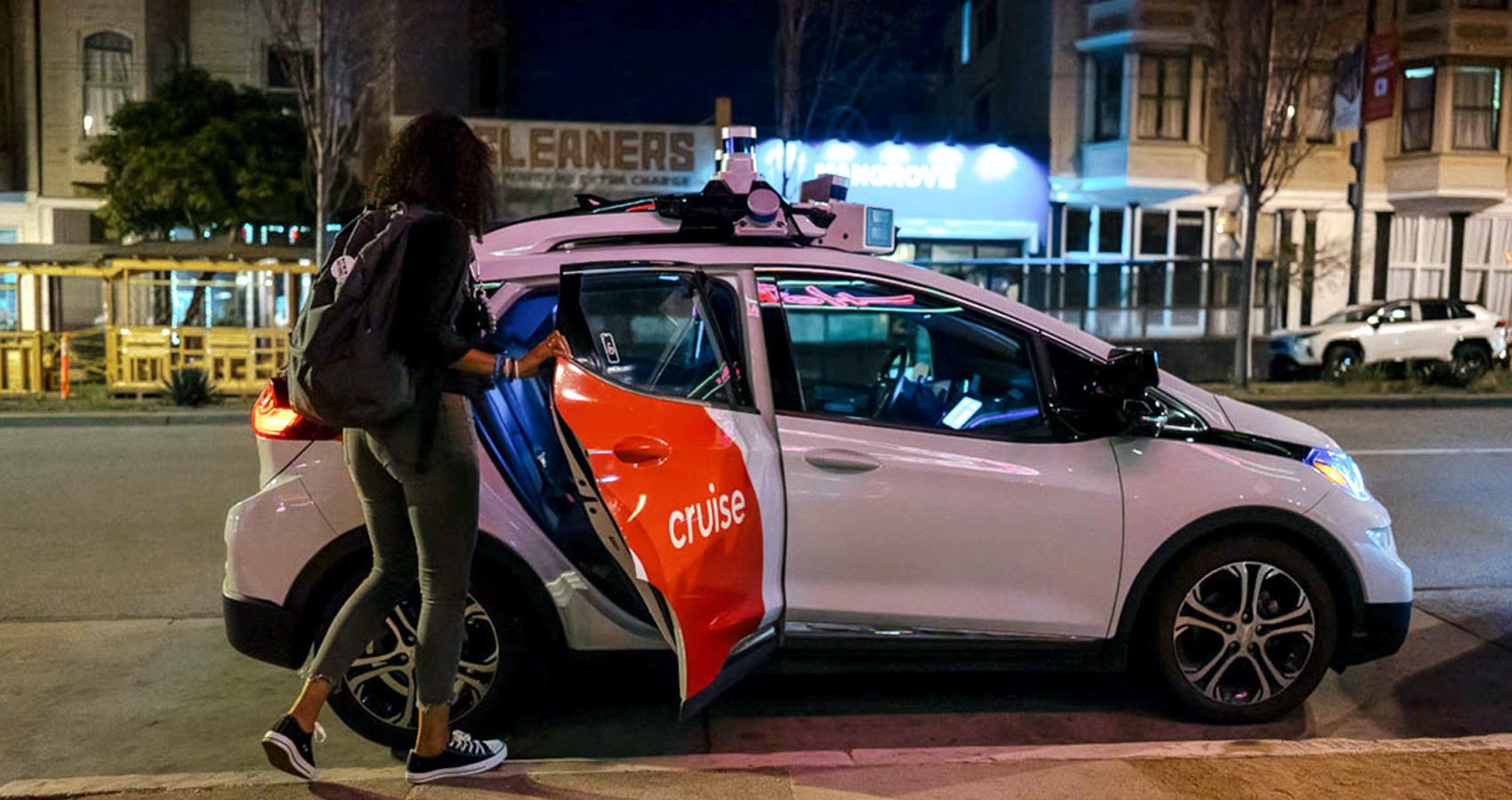Table Of Content

In 2019, Cruise landed a $1.15 billion investment from GM, SoftBank, Honda, and T. I have so many more questions — about the sensor suite, the business model, the testing (if any) that Cruise has conducted — but I’m informed that our time is done. The event is being managed by a unionized workforce, and any additional time could cost Cruise an additional $12,000. I thank Vogt for his time and jokingly ask if there’s an “abort” button in the vehicle.
GM’s self-driving car division is under investigation by DOJ and SEC after pedestrian dragging incident - CNN
GM’s self-driving car division is under investigation by DOJ and SEC after pedestrian dragging incident.
Posted: Thu, 25 Jan 2024 08:00:00 GMT [source]
California allows robo-taxis to expand and emergency responders aren't happy
The DMV and others have accused Cruise of not initially sharing all video footage of the accident, but the robotaxi operator pushed back – saying it disclosed the full video to state and federal officials. "Our folks cannot be paying attention to an autonomous vehicle when we've got ladders to throw," San Francisco Fire Chief Jeanine Nicholson said in an August hearing. "When you start having passive aggressive protests like people putting orange cones on your cars, this isn't going to come out your way," says Cummings. Even before the October incident, tension over self-driving cars was simmering in San Francisco. Barra reiterated plans for Cruise to be more “deliberate” when operations eventually resume at the troubled self-driving vehicle subsidiary.
Rider Review
The other crash involving a Mach E killed two people around 3.20am on 3 March in the northbound lanes of Interstate 95 in Philadelphia. Another driver who was able to avoid the CR-V told investigators that neither its tail nor hazard lights were working at the time. The NTSB can only make recommendations, but NHTSA has the authority to take action, including seeking recalls for safety issues. Data from the 2022 Mustang Mach E SUV showed that Ford’s “Blue Cruise” driver-assist system was in use ahead of the 24 February crash, according to a preliminary report released by the National Transportation Safety Board (NTSB). More worrisome to me was that on one of my trips — to a Warriors game at the Chase Center arena — at a busy intersection, a Waymo in front of us wouldn't respond to a traffic cop trying to wave it through a red light. Then another Waymo pulled up beside it and also didn't respond to the cop.
Cruise (autonomous vehicle)
Regulators accused the company of withholding information about the crash, only sharing that a Cruise robotaxi ran over a pedestrian who had been flung into its path after first being struck by a human-driven vehicle. The news that the company will be relying less on its operations staff during its testing comes after Cruise’s safety drivers have complained about a lack of safety standards during the pandemic and subsequent wildfires. They accuse Cruise of deploying its self-driving cars during the spring lockdown in defiance of public health orders banning nonessential travel. And they say Cruise isn’t doing enough to keep them safe during these public health crises. Cruise was the fifth company to receive a driverless permit from the state’s Department of Motor Vehicles, the others being Waymo, Nuro, Zoox, and AutoX. Currently, 60 companies have an active permit to test autonomous vehicles with a safety driver in California.
Rider FAQs
That prompted the city of San Francisco to file motions with the state demanding a halt to the expansion. Both Cruise and Waymo say their driverless cars are safer than human drivers – they don't get drunk, text or fall asleep at the wheel. The companies say they've driven millions of driverless miles without any human fatalities and the roads are safer with their autonomous systems in charge. In 2017, Cruise was conducting testing on public roads with Cruise AVs in San Francisco, Scottsdale, Arizona, and the metropolitan Detroit area.
Cruise used all-electric Chevy Bolt vehicles, which have been specifically manufactured to support its self-driving system, in its robotaxi fleet. The company intended to shift toward a custom-built autonomous vehicle called the Origin. Cruise was approved to test fully driverless cars (also called Level 4 in industry parlance) in California on October 15th.
A new way to ride
And to be honest, I'm not even sure I would always order a Waymo if I had a chance. Right now, beyond the novelty, the big upside for me is that the fleet's cars — electric Jaguars — are comfortable and clean. And that the per-trip cost is about the same as an Uber Comfort (one level up from the base Uber X fare) — but really a bit cheaper, since you're not tipping your robot driver.

On the night of October 2, one of Cruise's driverless cars struck a pedestrian in San Francisco leaving her critically injured and fighting for her life. Cruise has not announced when or where it will resume driverless operations. The company’s main operations were historically based in San Francisco, but Cruise lost its permits to operate there following the accident. Cruise began expanding its paid service area in the Phoenix area in August 2023. Cruise executives said at the time they wanted to take a measured business approach that preserves cash and improves safety culture in an attempt to put GM’s troubled autonomous vehicle subsidiary on the right path. Even so, Cruise isn’t the first company to build and test a self-driving car without traditional controls.
These impacts are largely outside of engineering, although some Tech positions are impacted also. The not-a-car sits on the gleaming black stage surrounded by a halo of light. It’s orange and black and white, and roughly the same size as a crossover SUV, but somehow looks much larger from the outside. There is no obvious front to the vehicle, no hood, no driver or passenger side windows, no side-view mirrors. By Andrew J. Hawkins, transportation editor with 10+ years of experience who covers EVs, public transportation, and aviation. "Cruise is so solid even on narrow streets — the steering wheel has no jitter, totally smooth each block."
In December 2016, Google stunned the world when it revealed that it had put a blind man in one of its egg-shaped autonomous test vehicles and sent him out for a short ride around Austin, Texas. Google’s Firefly vehicle, audaciously designed by YooJung Ahn, is widely considered to be the first car tested publicly without a steering wheel or pedals. Both Cruise and Waymo have released studies saying their vehicles are involved in fewer crashes than human drivers. One Waymo study says it has an 85% reduction in injury-causing collisions and a Cruise study says it has a 74% reduction.

Majority owned by General Motors since 2016, Cruise combines a culture of innovative technology and safety with a history of manufacturing and automotive excellence. Cruise has received funding from other leading companies and investors—including Honda, Microsoft, T. Rowe Price, and Walmart. Waymo has avoided much of the public ire that built up over the summer. Its spokesperson told NPR that "safety is our mission and top priority" and that "we treat every event seriously by investigating it to understand what happened."
You really are in a car, driving around the city, with no one in the driver's seat. Which is exactly how I felt after my last trip to San Francisco, when I took several rides in Waymo's robotaxis. In San Francisco, the futuristic nature of driverless vehicles has become a tourist attraction. Waymo said Tuesday that more than 50,000 people were on its waitlist to use the service. The company did not say how many users it would allow to fully use the app starting Wednesday.

No comments:
Post a Comment